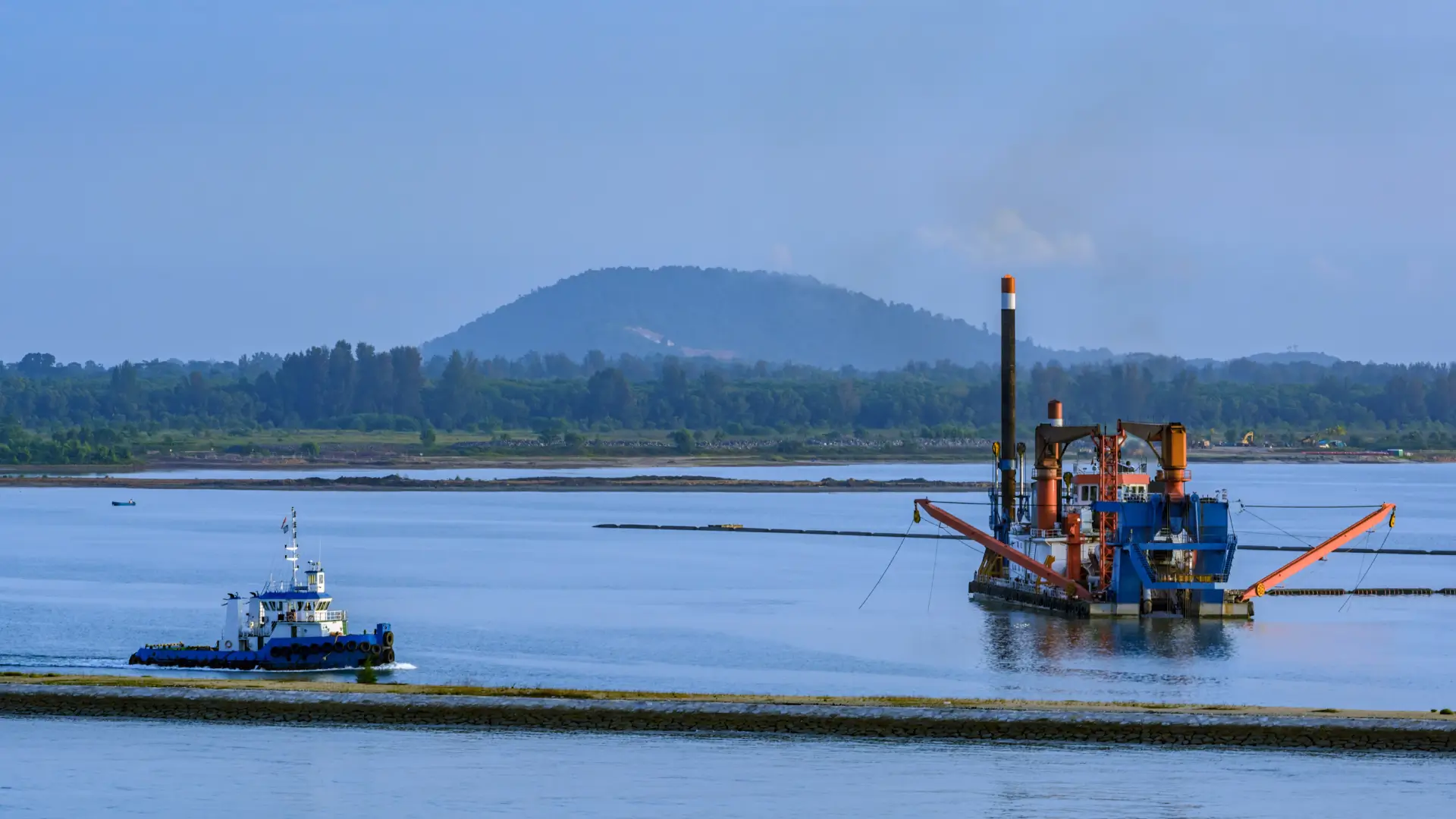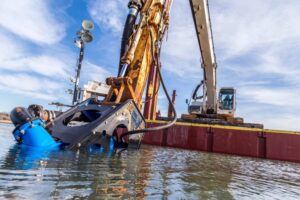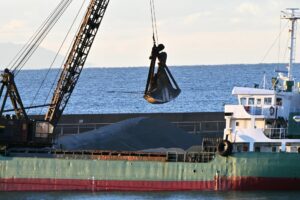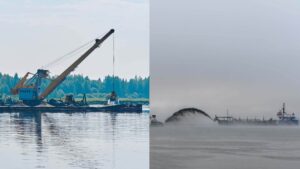Efficiency is the cornerstone of successful dredging operations. With projects often covering vast areas and involving the movement of large volumes of materials, ensuring the smooth and uninterrupted transport of sediment, slurry, and other materials is essential. Delays, misalignments, or equipment failures can lead to substantial cost overruns and extended timelines. As a result, maintaining the stability and functionality of key components, such as pipelines, is crucial to maximizing dredging efficiency. One of the most effective ways to achieve this is through the use of dredge pipeline floats, which play a vital role in keeping pipelines stable and properly aligned throughout the operation.
One critical element that supports the functionality and durability of pipelines in dredging operations is the use of dredge pipeline floats. These floats provide the necessary buoyancy and stability to keep pipelines in optimal working condition throughout the operation. By investing in high-quality dredging pipeline floats, companies can significantly enhance the overall efficiency of their projects. This article will explore how these pipeline floats contribute to improved operational outcomes and discuss the long-term benefits of using premium-quality floats in dredging projects.
Understanding Dredging Pipeline Floats
What Are Pipeline Floats?
Dredge pipeline floats are buoyant devices that attach to pipelines used in dredging operations. Their primary function is to keep the pipeline afloat, ensuring that it does not sink to the seabed or become buried in sediment. Without these floats, pipelines would be subject to greater wear and tear, reducing their lifespan and causing frequent operational disruptions.
By providing buoyancy, dredge floats allow pipelines to remain at an optimal height in the water, ensuring efficient transport of dredged materials. The use of dredge pipeline floats prevents physical damage from contact with the seabed and keeps the pipeline properly aligned, reducing the risk of blockages and damage that can lead to costly repairs and delays. These floats are essential for maintaining the smooth operation of pipelines during dredging projects.
Types of Dredging Pipeline Floats
There are two main types of pipeline floats used in dredging: foam-filled floats and inflatable floats.
- Foam-filled floats: These are solid, durable floats made from high-density foam encased in a tough outer shell. They provide consistent buoyancy and are resistant to punctures, making them ideal for long-term projects where durability is a priority.
- Inflatable floats: These floats are lightweight and easy to transport, as they can be deflated when not in use. They are suitable for projects where flexibility is required, although they may not be as durable as foam-filled options.
Both types of floats play a significant role in maintaining dredging efficiency by ensuring that pipelines remain buoyant and functional throughout the dredging process.
How Pipeline Floats Improve Efficiency
Dredging pipeline floats improve efficiency by preventing pipelines from sinking, bending, or becoming misaligned. By keeping the pipeline suspended, these floats ensure that materials can flow smoothly and without interruption, minimizing the risk of blockages and breakdowns. This not only speeds up the dredging process but also reduces the need for costly repairs and maintenance, contributing to the overall success of the project.
The Impact of High-Quality Pipeline Floats on Efficiency
Stability and Buoyancy
Maintaining consistent buoyancy is one of the most critical aspects of efficient dredging operations. High-quality dredge pipeline floats provide the stability needed to keep pipelines at the correct height, even in challenging marine environments. These floats are designed to handle strong currents, waves, and varying water conditions, ensuring that the pipeline remains steady and aligned.
Maintaining proper alignment prevents sagging and misalignment, which can disrupt material flow and lead to inefficiencies. By using reliable pipeline floats, companies can avoid delays and ensure that the dredging process remains on schedule.
Durability and Reliability
The durability of pipeline floats is a key factor in their effectiveness. High-quality floats are made from premium materials, such as high-density polyethylene, which extends their lifespan and makes them resistant to wear and tear. These materials can withstand exposure to UV rays, saltwater, and abrasive materials, ensuring that the dredge pipeline floats remain intact and functional even in harsh conditions.
Reliable dredge pipeline floats are essential for minimizing disruptions during dredging operations. Floats that can endure rough conditions provide consistent support to the pipeline, reducing the need for frequent replacements or repairs and contributing to overall dredging efficiency.
Reducing Maintenance and Downtime
Maintenance and downtime can significantly impact the efficiency of dredging operations. When pipelines are not adequately supported, they are more prone to damage, which leads to increased repair costs and delays. High-quality dredge pipeline floats help minimize these issues by providing robust support and reducing the strain on the pipeline.
By using durable floats, companies can reduce the frequency of repairs and maintenance, ensuring that the pipeline remains operational for longer periods. This reduction in downtime enables faster project completion and allows dredging operations to stay within budget and on schedule.
The Long-Term Benefits of High-Quality Dredging Pipeline Floats
Cost-Effectiveness
While high-quality dredge floats may have a higher upfront cost, they offer significant long-term savings. Durable floats require fewer replacements, reducing maintenance costs and minimizing operational disruptions. This cost-effectiveness makes them an excellent investment for dredging companies aiming to maintain efficient pipeline operations over extended periods.
Increased Operational Efficiency
High-quality dredge pipeline floats contribute to increased operational efficiency by ensuring smooth material transport. With reliable buoyancy and support, the pipeline remains in optimal condition, allowing materials to flow without interruptions. This leads to faster project completion and more consistent results, which is essential for maintaining profitability and meeting project deadlines.
Enhancing Project Success
The use of high-quality pipeline floats has a cumulative positive impact on the overall success of dredging projects. By reducing downtime, maintenance costs, and the risk of damage, these floats help ensure that projects are completed on time and within budget. This level of efficiency enhances a company’s reputation for delivering successful projects, leading to more business opportunities and growth.
Conclusion
High-quality dredge pipeline floats play a crucial role in maximizing dredging efficiency. They provide the stability, durability, and support needed to keep pipelines functioning at their best, even in challenging environments. By investing in premium floats, dredging companies can significantly reduce downtime, minimize maintenance costs, and ensure smoother material transport, leading to faster project completion.
In summary, the use of high-quality dredge floats is an investment that pays off in the long run. These floats enhance operational efficiency, contribute to cost savings, and improve overall project success. For companies aiming to maximize efficiency in their dredging operations, prioritizing high-quality dredge pipeline floats is essential for achieving long-term success and maintaining a competitive edge in the industry.






